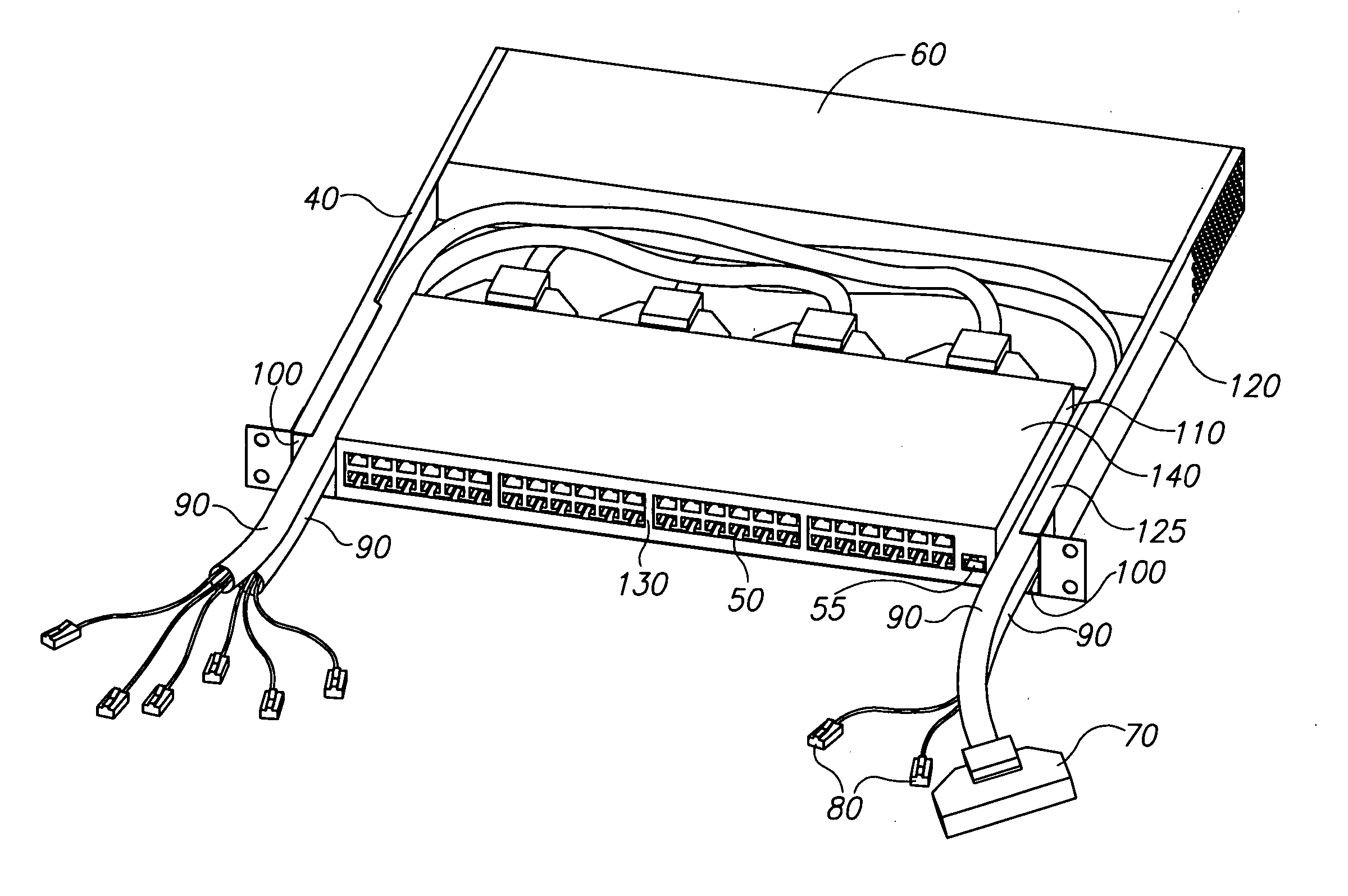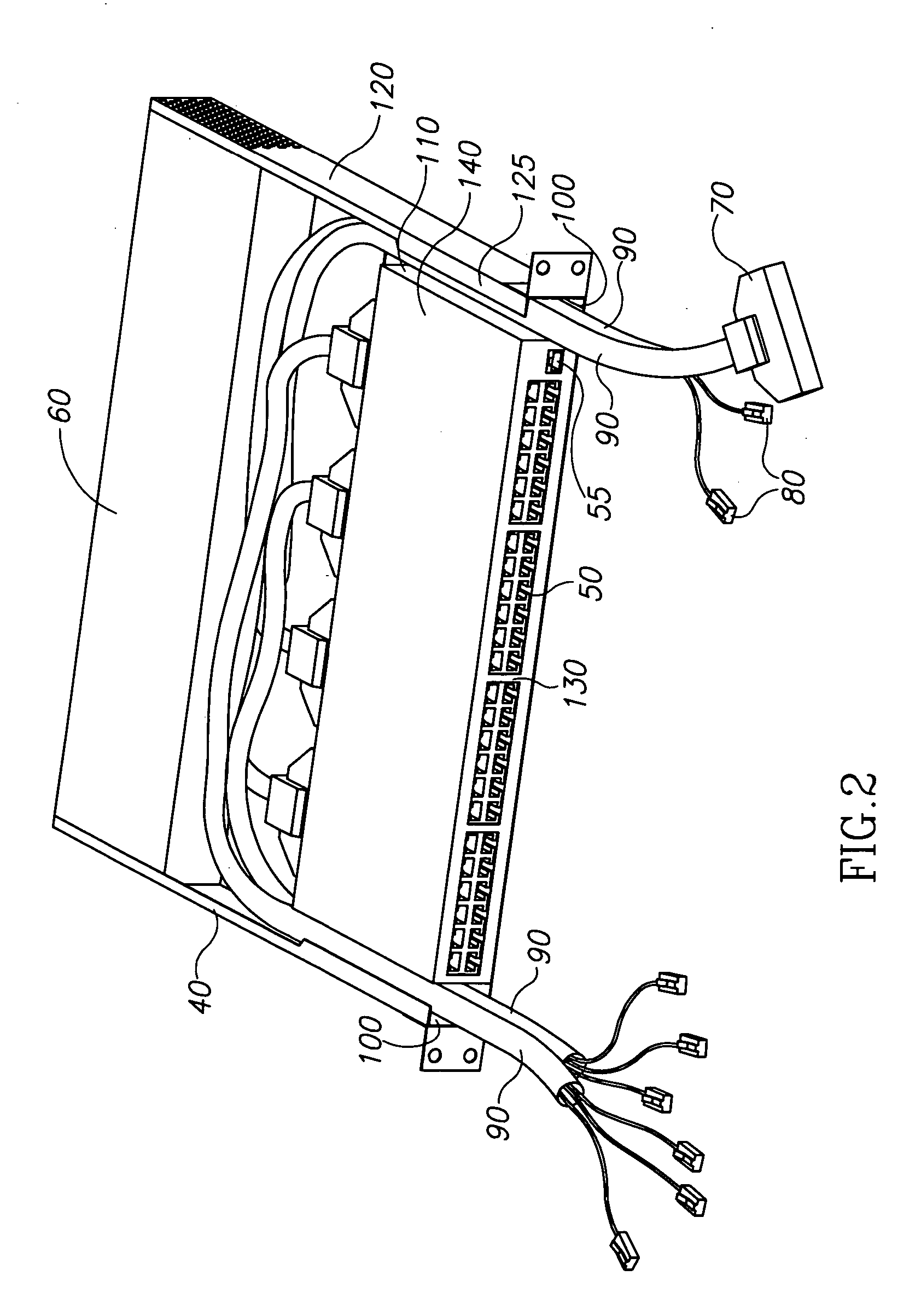High density front access device
a front access device, high density technology, applied in the direction of coupling device connection, electrical apparatus construction details, support structure mounting, etc., can solve the problem of difficult access to the rear of the telecommunications rack
- Summary
- Abstract
- Description
- Claims
- Application Information
AI Technical Summary
Benefits of technology
Problems solved by technology
Method used
Image
Examples
first embodiment
[0044]FIG. 4a is a high level perspective drawing depicting midspan equipment module 40 in accordance with the principle of the invention, comprising: chassis frame 120 exhibiting inner wall 240 and flange 125; Amp Champ connectors 70; sub-module chassis 140 having face 130, distal face 250, side wall 110, and network management jack 210; passageway 100; cables 90; power supply 60 exhibiting distal end 65; and power connection 220. Power supply 60 is situated at the rear of chassis frame 120 and is operatively connected to sub-module chassis 140 by power connection 220. Distal end 65 of power supply 60 is preferably coincident with, and forms the back face of, chassis frame 120. Cables 90 which terminate at one end in Amp Champ connectors 70 plugged into jacks located on distal face 250 of sub-module chassis 140 are passed through passageway 100 which is defined between an one inner wall 240 of chassis frame 120 and side wall 110 of sub-module chassis 140. A second end of each of ca...
second embodiment
[0047]FIG. 4b is a high level perspective drawing depicting midspan equipment module 40 in accordance with the principle of the invention, comprising: chassis frame 120 exhibiting inner wall 240 and flange 125; sub-module chassis 140 exhibiting face 130, distal face 250, RJ-45 connectors 50 and side wall 110; passageways 100; power supply 60 exhibiting distal end 65; power connection 220; opening 270; and cable tie down points 260. Power supply 60 is situated at the rear of midspan equipment module 40 and is operatively connected to sub-module chassis 140 by power connection 220. Distal end 65 is coincident with, and forms the back face of, chassis frame 120. For clarity cables have been omitted. RJ-45 connectors 50 located on distal face 250 of sub-module chassis 140 receive cables via passageway 100 defined between inner wall 240 of chassis frame 120 and side wall 110 of sub-module chassis 140. Opening 270 in the bottom wall of chassis frame 120 eases disconnection of RJ-45 plugs ...
PUM
 Login to View More
Login to View More Abstract
Description
Claims
Application Information
 Login to View More
Login to View More - R&D
- Intellectual Property
- Life Sciences
- Materials
- Tech Scout
- Unparalleled Data Quality
- Higher Quality Content
- 60% Fewer Hallucinations
Browse by: Latest US Patents, China's latest patents, Technical Efficacy Thesaurus, Application Domain, Technology Topic, Popular Technical Reports.
© 2025 PatSnap. All rights reserved.Legal|Privacy policy|Modern Slavery Act Transparency Statement|Sitemap|About US| Contact US: help@patsnap.com



